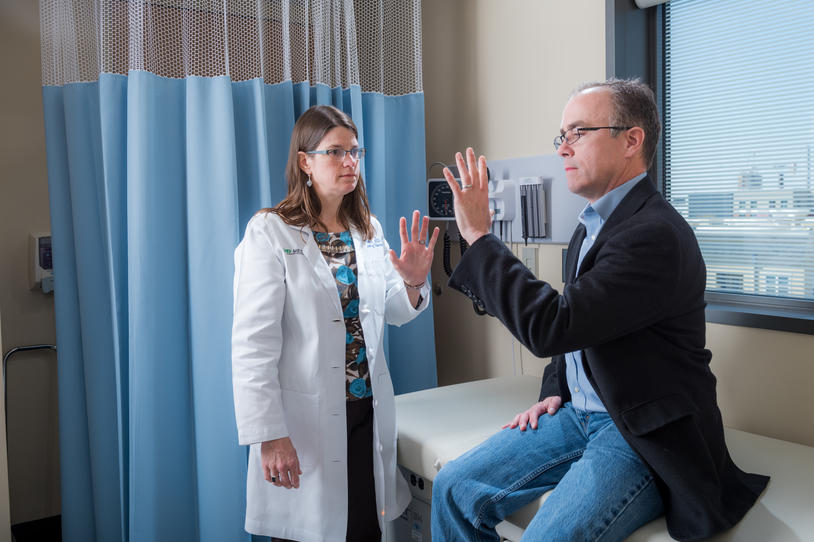
Before joining The Michael J. Fox Foundation (MJFF) in 2014, I was a movement disorder specialist in private practice. Nearly every day, I saw people and families with Parkinson’s. I explained the difficult diagnosis, the available treatments, and what the disease may mean for their future.
“No, there is no objective test for Parkinson’s. Yes, I’m old enough to be a doctor.”
I did my best to help people digest this tough news. And I had the privilege and pleasure of walking through many years with some of the kindest, most caring people who taught me how to care and communicate. But I wanted to do more, to make a bigger impact. And that’s why I do what I do today: create resources to meet people where they are with Parkinson’s, fill in the gaps between doctor visits and put research in context.
After more than five years away, though, I longed to be back with patients in the doctor’s office: to see how care conversations unfold in the exam room, how doctors and patients use new Parkinson’s medications, and how people get involved in research. So one recent afternoon, I sat in on movement disorder patient visits at a New York City academic medical center. I listened to the questions and answers that led patients and their doctors to the best next steps for each (ranging from a trial of a new medication for anxiety to a brain scan to confirm a suspected diagnosis to no change and recheck in three months). I saw how they shared frustration over difficult-to-treat symptoms and smiles to lessen the tension that comes naturally with sitting in a doctor’s office.
I was struck by some of the commonalities and differences in Parkinson’s: topics that we regularly discuss (and that researchers are studying intently), but which were so clearly illustrated by the people and families I saw that afternoon. For example, the variability of disease — each person has a different mix of symptoms, different treatment approach, different course. That day, three people in a row had three different “types” of the disease: some with mostly non-movement or mood symptoms; others with tremor, walking and balance problems.
Another common theme in Parkinson’s (because of the absence of a test): the difficulty with diagnosis. One person had seen multiple doctors over the course of a year and wondered about the criteria for diagnosis.
And, when it comes to care, the importance of support: each person had built their own care team, some with family members; others with mental health care providers; still others, a language interpreter.
Seeing how people experience these (and other) parts of Parkinson’s, how doctors and care teams help them understand and manage, and how patients and loved ones respond gives me a fresh perspective. And that helps me create resources to hopefully meet people’s needs in and outside of the doctor’s office. Patients are not only the experts on the disease, they’re also teachers — teaching others practical tips to get around symptoms, researchers how and why the disease changes, and doctors how to see and care for a whole person.
Thanks for teaching me. I’ll be returning to clinic regularly, so stay tuned for more reflections and insights. And in the meantime, visit the Ask the MD webpage for practical tips and information on Parkinson’s care and research.
